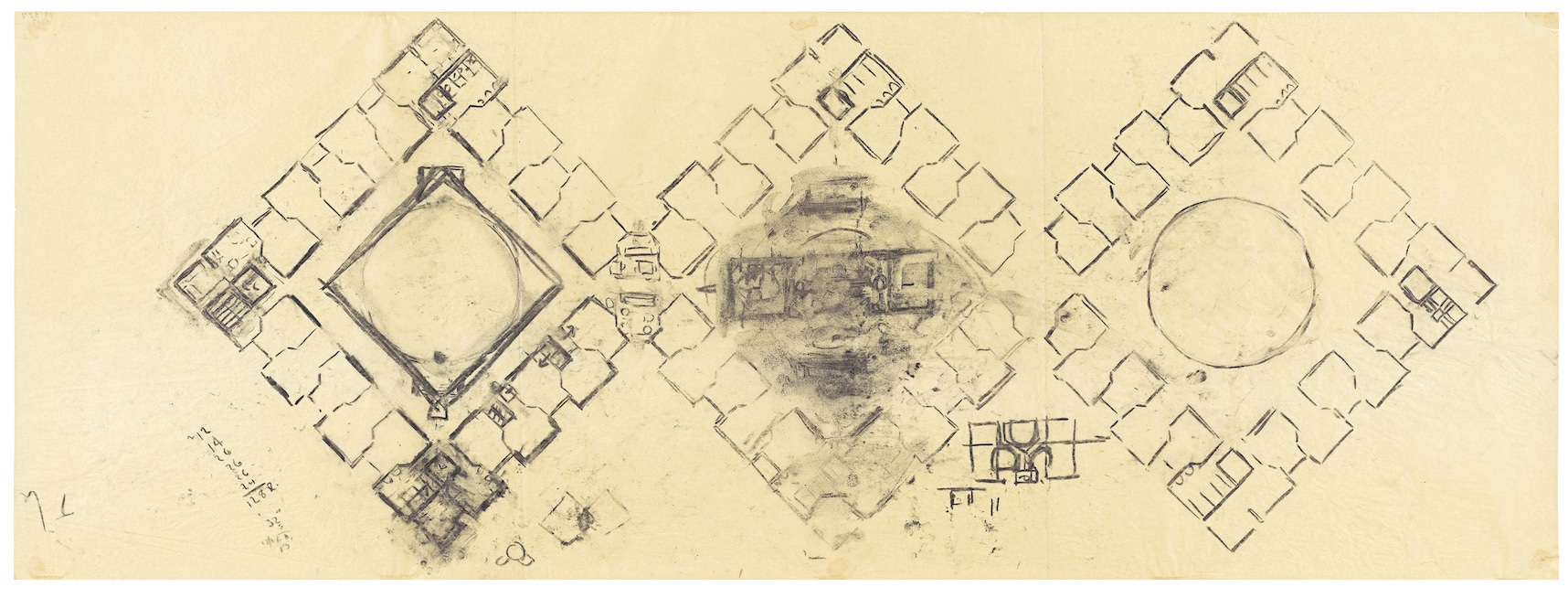Growth or Composition? Colin Rowe to Louis Kahn
Extracted, with permission, from Louis Kahn: The Importance of a Drawing edited by Michael Merrill, published by Lars Müller Publishers © 2021.
Click here to read a review of this book by Stan Allen.
An auspicious meeting: At the end of 1955, a thirty-five-year-old academic named Colin Rowe visited the office of the twenty-year-older Louis Kahn: on Kahn’s drawing boards, a project for a Jewish community center near Trenton, New Jersey (1954–59, unbuilt). Rowe, who taught at the University of Texas at Austin, had made an early name for himself with his seminal essay ‘The Mathematics of the Ideal Villa’. Now, together with a group of fellow architects and academics who would later become known as the ‘Texas Rangers’, he was engaged in an attempt to reshape mid-century architecture’s International Style curriculum through an infusion of history, theory, and formal analysis. Rowe’s dialectically driven mind and his unremitting pedagogical urge would eventually make him one of the late twentieth century’s most influential theoreticians and educators. A letter to Kahn, written some five weeks after his visit and reproduced on the following pages, is a remarkable product of that mind and its urge. It merits closer study. Rowe’s letter – written in his typical chatty and erudite style – is noteworthy for several reasons:
Firstly, for the way that it unites topics from three of his key essays. ‘The Mathematics of the Ideal Villa’ (1947), his then-in-the-works ‘Transparency: Literal and Phenomenal’ (1955–56, authored with Robert Slutzky, who had accompanied Rowe to Kahn’s office), and ‘Neo “Classicism” and Modern Architecture I and II’ (1956–57), the latter of which would feature an incisive analysis of Kahn’s Trenton Jewish Community Center. In addressing the themes explored in these essays, Rowe is encouraging Kahn – who at the same time was torn between an architecture informed by the lessons of history and one that emerges sui generis through the rules of cell-like geometric growth – to regard his own work within the greater expense of architectural tradition.
Secondly, for being perhaps one of the most slyly offhanded job applications on record. (Having provoked the ire of UT’s old-school modernists. Rowe and his cohorts at Austin were on the verge of being fired en masse, and he was hoping to find an opening at Kahn’s University of Pennsylvania.)
Thirdly, and of particular interest in the context of this book, as an instructive case of written-drawn argument. Educated as an architect as well as an art historian, Rowe’s letter included a tracing and a ‘transparency’ diagram of Palladio’s invented ‘Villa of the Ancients’ from chapter sixteen in the second of his Four Books of Architecture. At Austin, drawing was considered ‘a means of investigation’ and, thanks in no small part to Rowe and his colleagues, diagrams such as the one included with the letter would find increasing use as both analytical and generative tools in both university studios and in practice.
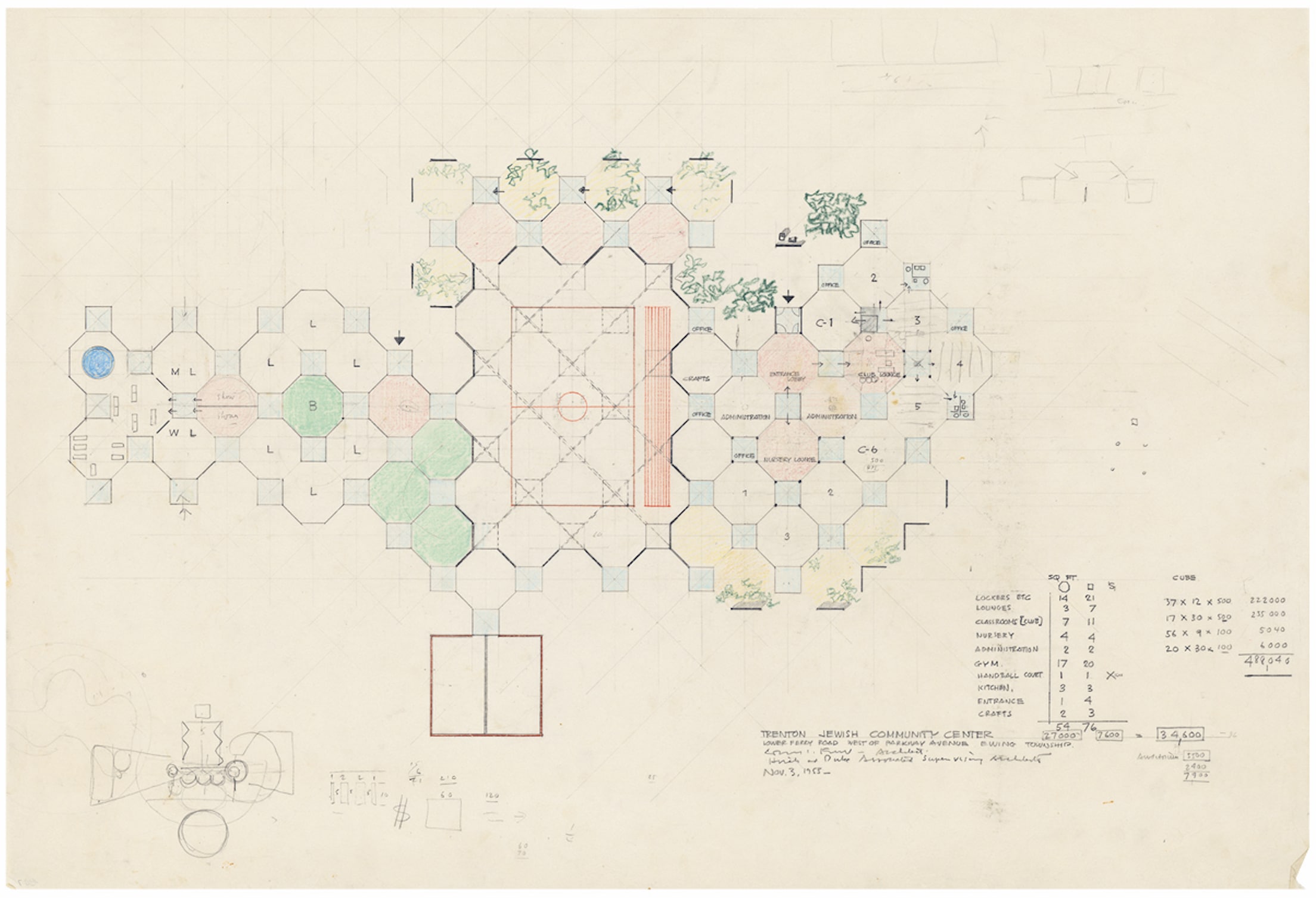
And finally, for the way that Rowe uses his academic status as a platform from which to interpret and contextualise Kahn’s work and to then point him in what he sees as the most promising direction forward. Rowe’s analysis of Kahn’s work at this moment in his career is a cogent one. Seen in retrospect, his suggestion of how that work might become richer through a kind of dialectical interanimation – a ‘permanent argument’ – between the opposite principles of ‘Growth’ and ‘Composition’ is especially prescient. Rowe’s humanist analysis is expressed in formal terms (as his tended to be) and, as such, makes an instructive complement to others in this book that explore that fraught and fuzzy word ‘composition’ in its relational, social, and historical terms (see the essays in this volume by Michael Benedikt, Robert McCarter, and David van Zanten).
Wrote Rowe, ‘I remember that something of our conversation in Philadelphia revolved around principles which we designated as GROWTH and COMPOSITION. Principles which are opposed… You deplored COMPOSITION because it appeared to be no more than a manipulation of forms for the sake of effect. You wanted to GROW a building’. Taking the side of Composition, or the parti, Rowe then explained, ‘the composition of which I was speaking was the result of a dialectic, and not or an irrelevant fantasy or purely arbitrary choice. For me, your cubes, our hexagonal cells, are objective data with a life of their own in which one can’t intervene. They are independent, aggressively so, irreducible, intractable phenomena. This I like. At the same time, although they are independent, they are in fact the acts of your volition. Once born you can’t violate their mode of being. But you are in a position (since they are independent) to argue with them…. [T]o me your cubes are a very powerful system of ordinance that would like nothing better than to bring into some sort of dialectical relationship with parti’.
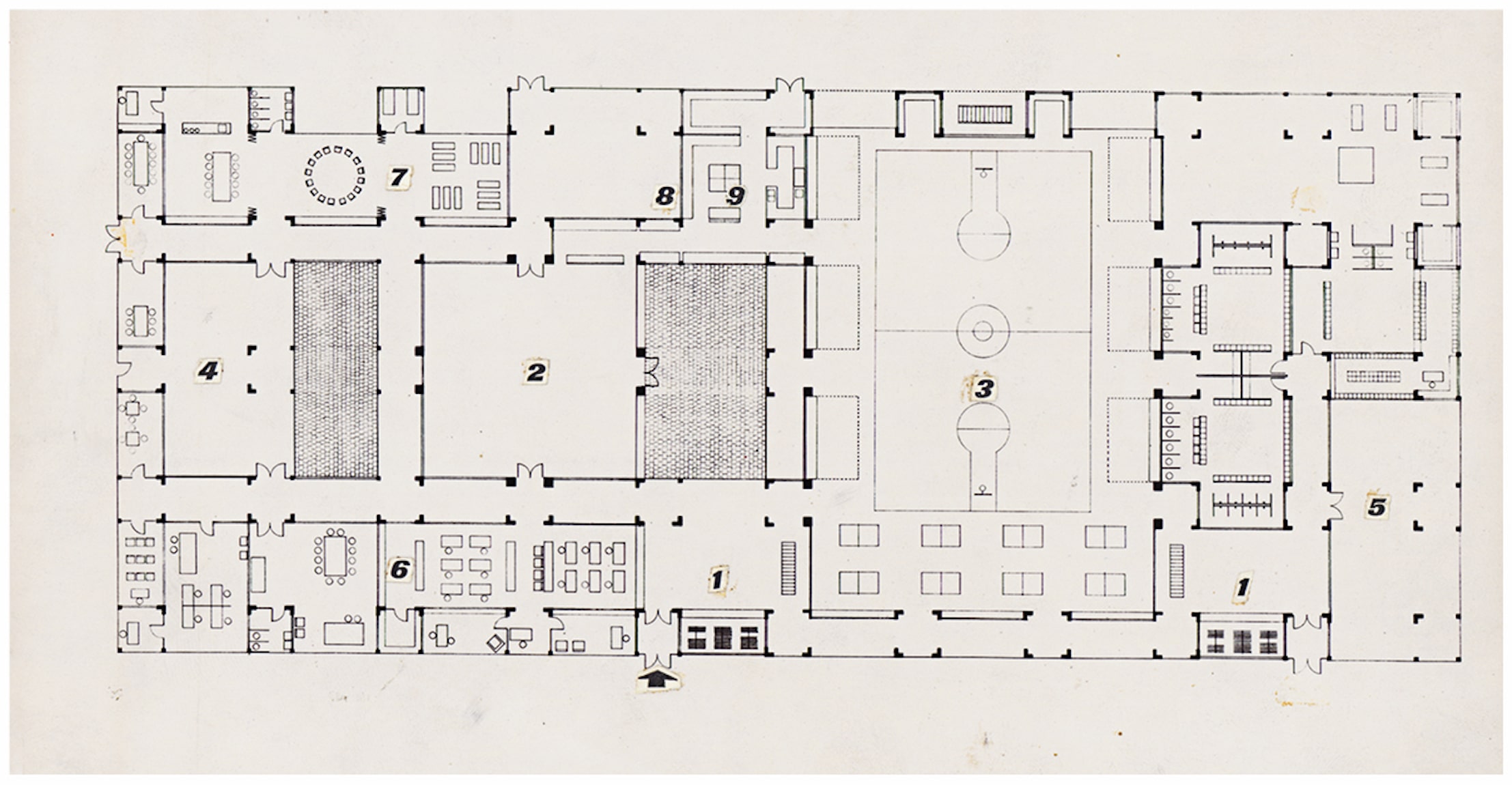

In his later schemes for the Jewish Community Center. Kahn would indeed shift away from the paradigm of ‘Growth’ toward that of Rowe’s ‘Composition’. In the end, Composition’s victory may have even been a little too complete: the provocative independence or the once-Intractable parts was now subsumed in a-some might say too tractable-harmonious whole, one which strongly recalls Kahn’s Beaux-Arts training. Kahn staged a similar argument between these principles in his Research Institute for Advanced Science (1956–58), and would restage it in successive projects and in none more vigorously than that for Erdman Hall at Bryn Mawr College (1960–65), this time with his collaborator Anne Tyng championing ‘Growth’ and Kahn pulling toward ‘Composition’.


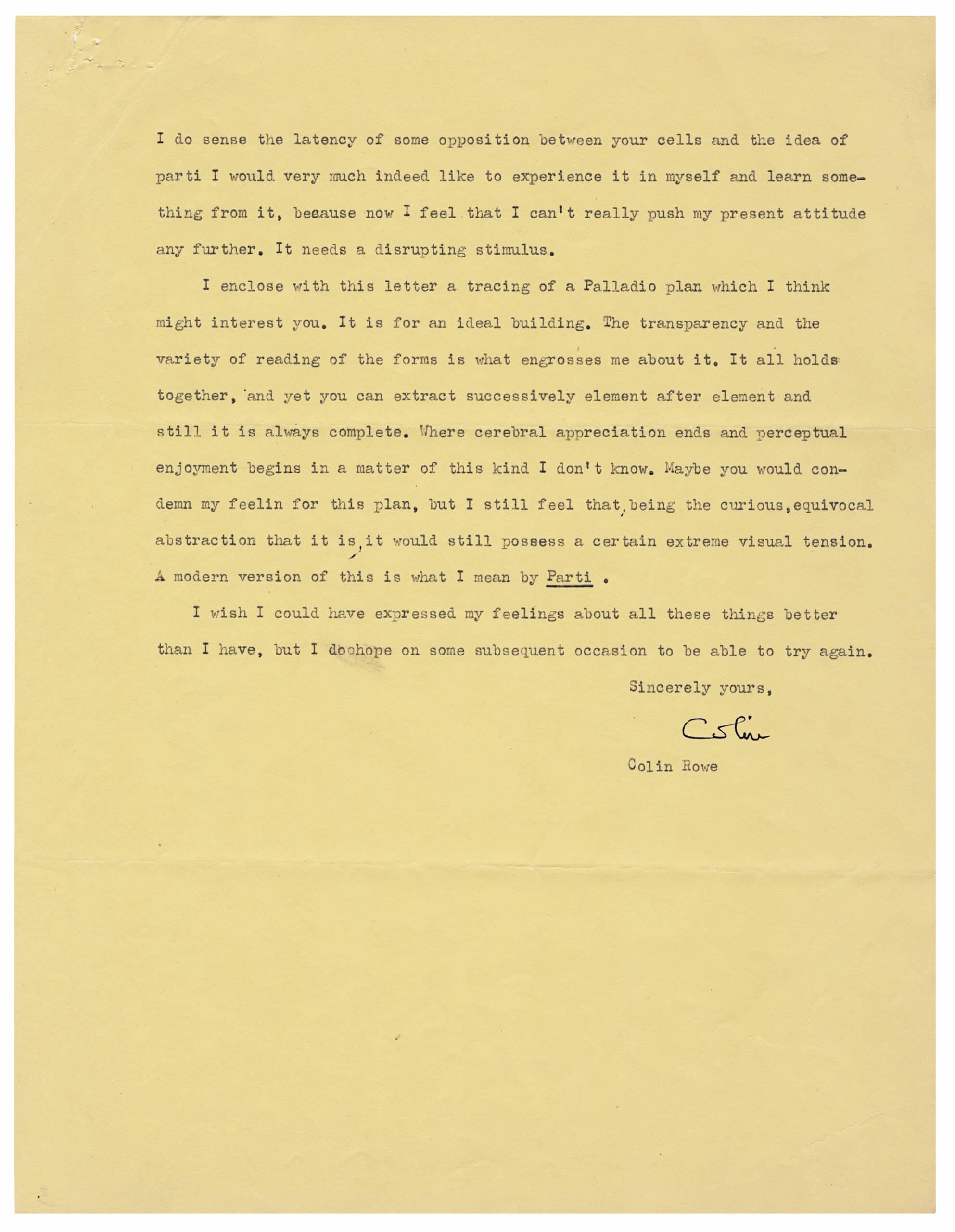


Whether we call the argument one between principles of ‘Growth’ (and ‘Composition’, between ‘bottom-up’ and ‘too-down’ methods, or between ‘structuralism’ and ‘rationalism’, the dialectical charge that Rowe had hoped to see in Kahn’s plans would soon become one of their defining characteristics. It’s a charge that animates plans as varied as those for the Indian Institute of Management (1962–74), the Dominican Motherhouse (1965–69), or the Kimbell Art Museum (1966–12). And When Rowe typed beneath the Palladian plan, he might well have been describing a Kahnian plan or ten years later: ‘Don’t you really find it fantastic the way all the spaces here fluctuate, are alternately positive and negative, etc. Also the way in which you could almost turn the plan inside out because everything is entirely constructed?’
What role Rowe’s intervention played in Kahn’s development remains open to speculation; it was, after all, only a visit and a letter. In any case, that letter remains a remarkable souvenir of a fecund moment and a provocative drawn-written document of what the collaboration between a critic and an architect might be.


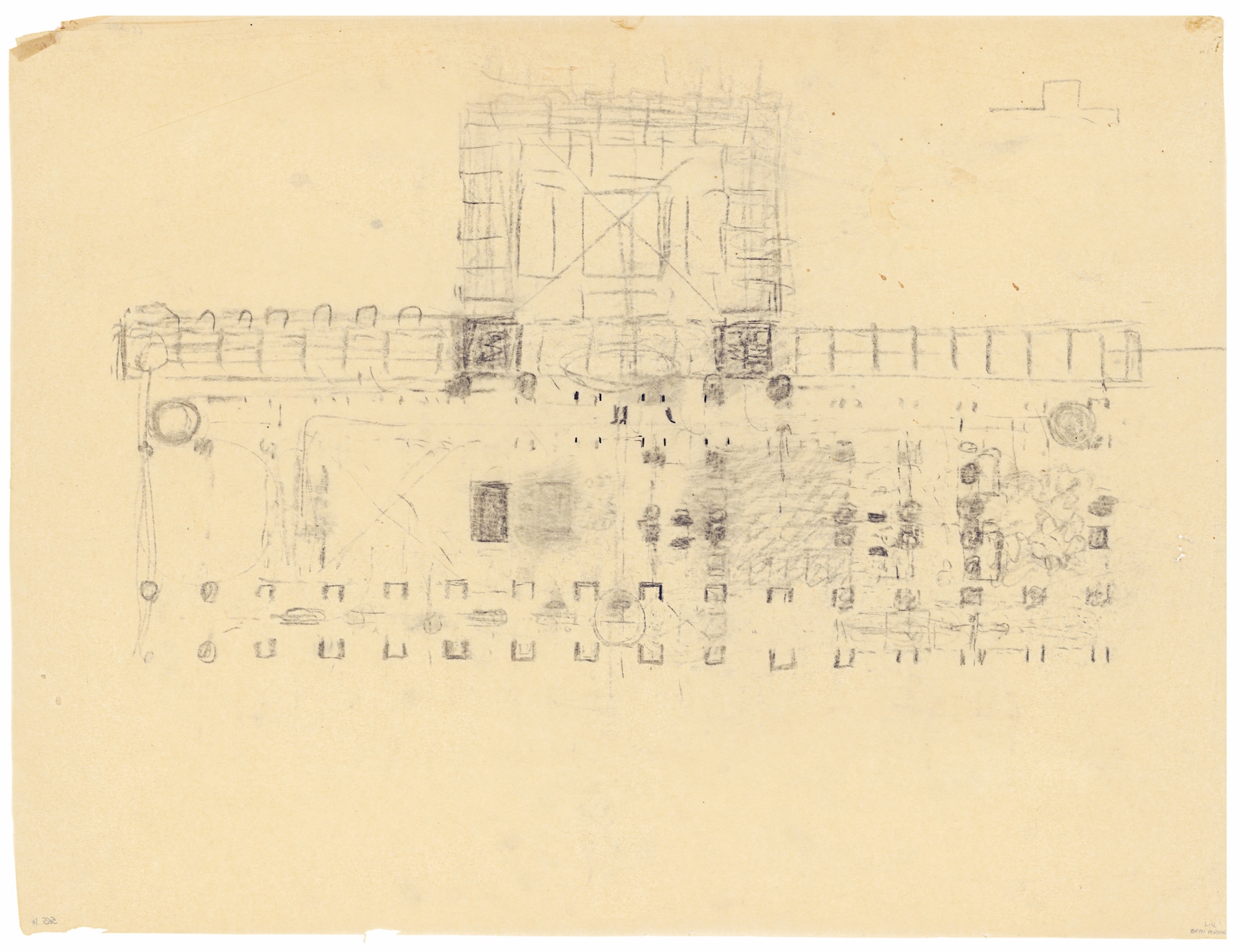
Louis Kahn (1901–1974), Erdman Hall, Antithesis ‘Composition’. Museum of Modern Art, New York.
